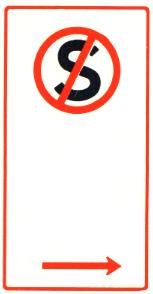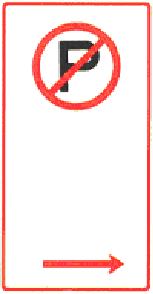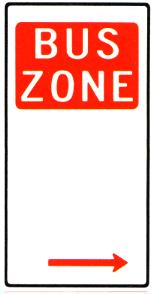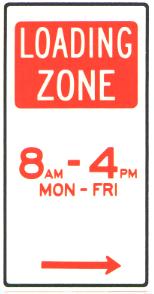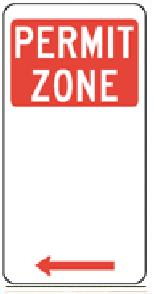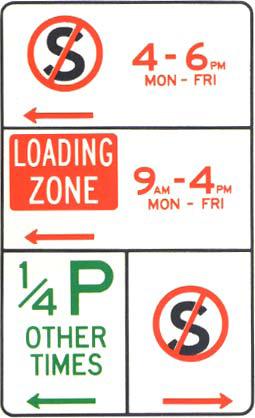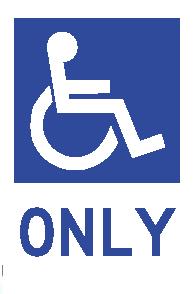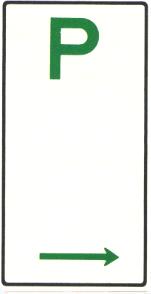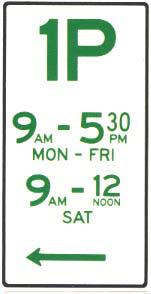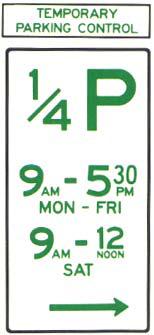Common Signs
| NO STOPPING: The NO STOPPING symbol means you are not permitted to stop unless traffic conditions require it (e.g. in a queue of traffic). These zones are created for road safety. NOTE: The Supreme Court of South Australia has decided that driving a vehicle backwards and forwards in a No Stopping Zone while waiting (e.g. to pick up a passenger) amounts to “STOPPING”. |
| NO PARKING: The NO PARKING symbol means you may stop for a maximum of two minutes. The driver must be in attendance and not more than three metres from the vehicle. Some No Parking signs do not apply for certain vehicles (e.g. emergency services). In these cases the excepted vehicles may stop for an unlimited period. |
| BUS ZONE: A vehicle must not park in a BUS ZONE within the Alexandrina Council unless the vehicle is a public bus. NOTE: “Public Bus” is a bus engaged in regular passenger services under Passenger Transport Act 1994. |
| LOADING ZONE: A vehicle must not be parked in a LOADING ZONE unless:-
NOTE: “Commercial Vehicle” means a motor vehicle constructed solely or mainly for the carriage of goods and includes vehicles such as a utility, truck and van but does not include vehicles such as a station wagon, sedan, hatch, four wheel drive or coupe. The times that Loading Zones operate are similar to Parking Zones, i.e. they may cease to operate during off-peak traffic periods. Here are some examples of vehicles which are entitled to be parked for a maximum of 30 minutes in Loading Zones. |
| PERMIT ZONE: This area is only for vehicles correctly displaying a valid permit issued or recognised by the Council for that zone. NOTE: Holders of a disabled person’s permit are NOT entitled to park in a Permit Zone unless the sign is accompanied by a disabled person’s symbol. |
| MULTIPLE SIGNS State different restrictions or conditions which apply at certain times during the week. All restrictions or conditions are located on the same panel. Each section must be read in conjunction with the other sections. NOTE: Occasionally sign posted zones are interrupted by driveways, entrances, laneways or fire hydrants/plugs. Additional signs or road markings are not required under the legislation and are only installed if the zone is of sufficient length to warrant their placement. Motorists have a responsibility when parking to check for these items as well as any restrictions or conditions on both parking control signs and/or road markings that apply to the zone. |
| DISABLED SYMBOL: The DISABLED PERSON’S symbol is also displayed in car parks and means that only vehicles displaying a current Disabled Person’s parking Permit issued under Part 3D of Motor Vehicles Act 1959 and driven by or carrying the disabled person may use the parking space. NOTE: The holder of a Disabled Person’s parking Permit must comply with all parking conditions. Where a concession applies, it is referred to in the appropriate section of this guide. |
| PERMISSIVE PARKING ZONE: The PERMISSIVE PARKING sign allows you to park a vehicle as long as you obey any restrictions on the sign. The 'P' symbol alone means there is no time limit in that Permissive Parking Area. NOTE: The letter 'P' symbol may however be used in off-street car parks where a specified time or other conditions apply. |
| TIME LIMIT PARKING ZONE: A TIME LIMIT may be stated on Permissive Parking signs. This enables anyone to use the available parking space for a set period instead of one vehicle parking for a maximum period of 24 hours (all day). The limited time is shown by a number beside the letter 'P' symbol (e.g. ‘1P’ means one hour parking; ½'P' means half hour parking). Where the limit is very short (e.g. 10 minutes) the word MINUTE is shown with the number. Holders of a Disabled Person’s parking Permit are allowed certain concessions. If the time limit on the parking sign is less than 30 minutes, the time limit for a disability parking permit holder will be 30 minutes; or if the time limit on the sign is 30 minutes or more but 1 hour or less, the time limit for a disability parking permit holder will be two hours; or if the time limit on the sign is more than 1 hour, the time limit for a disability. |
| TEMPORARY PARKING CONTROL These signs are used when temporary conditions are necessary (e.g. parades or roadworks). These signs will override any other signs in the area. No changes to any existing road markings occurs. |
ROAD MARKINGS:
Lines may be painted on roads to emphasise restrictions or conditions as stated on parking control signs.
Parking bays are marked in car parks or on the road surfaces, the parking of a vehicle is only permitted completely within these bays.
Certain areas have mandatory restrictions and must be kept permanently clear of stationary vehicles. No signage is necessary for these areas, however, solid yellow ‘No Stopping’ road markings may be placed on the road to remind the public (e.g. at traffic lights).
These have the same effect as if the area had signs stating ‘No Stopping Zone’.
Where signs are present to indicate a restriction or requirement, they take precedence over any road markings which may be present.
PARALLEL PARKING:
All vehicles must be parked parallel to the kerb UNLESS the signs and/or road markings indicate angle parking is required.
All parallel parked vehicles must face the same direction as the direction of traffic on that side of the road – this is called ‘the lawful direction’. To ensure a clear passage for moving traffic, parallel parked vehicles (other than motor cycles) must have both kerbside wheels as close as practicable to the kerb.
MOTOR CYCLE PARKING:
When parallel parking at least one wheel must be as near as practicable to the kerb.
When angle parking is indicated a motor cycle must park within the bay with either wheel as close as possible to the kerb.
ANGLE PARKING:
Vehicles must park at the angle shown on the sign or lines painted on the road. In 45º or 60º spaces the front wheel must be as close as possible to the kerb.
VEHICLES MUST NOT REVERSE INTO 45º or 60º ANGLE PARKING BAYS. This inconveniences other drivers and can hold up the flow of traffic.
FURTHER OFFENCE:
A vehicle which has been reported may receive additional penalties for each hour that the offence continues to occur.
Where a sign indicates a time limit which is less than one hour, a motorist may be reported for a Further Offence for each successive period of the time limit, while the vehicle remains parked in the zone when the zone is in operation.
VEHICLE MOVEMENT:
It is not sufficient for motorists to swap places with each other at regular intervals and park all day in the same time limit parking zone. Vehicles must be moved away from the time limit area for a minimum of one time limit period. This enables more motorists to use the available parking spaces in that location.
WHEN THE OWNER IS NOT THE DRIVER
The driver of a motor vehicle is primarily responsible for any parking infringement notice and all motor vehicle owners are given the opportunity of providing Council with a Statutory Declaration giving full details of the driver at the time each alleged infringement was committed.
Should the driver not be identified by the owner (e.g. if full name and address is not supplied) then the owner of the motor vehicle may be liable for the infringement notice under the terms of the legislation.
HOSPITALS AND PARKING
We are aware of the trauma and distress involved when relatives (particularly children) have to be taken to hospital. However, we also have a responsibility to ensure that road safety and access is maintained. For this reason, parking in the vicinity of the hospital is restricted. However, we recommend you enquire with the hospital prior to arrival to determine if parking is available for short-term purposes. All drivers seeking parking on-street should be aware that all parking in the vicinity of the hospital is subject to restrictions.
GENERAL INFORMATION:
1. Parking Inspector can place erasable marks on tyres. It is an offence to erase these marks without lawful authority.
2. Please note a litter offence is alleged to have been committed if an infringement notice or other litter is left on the ground in a public place.

